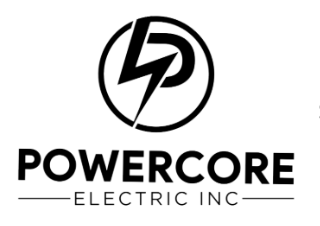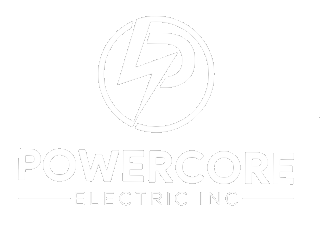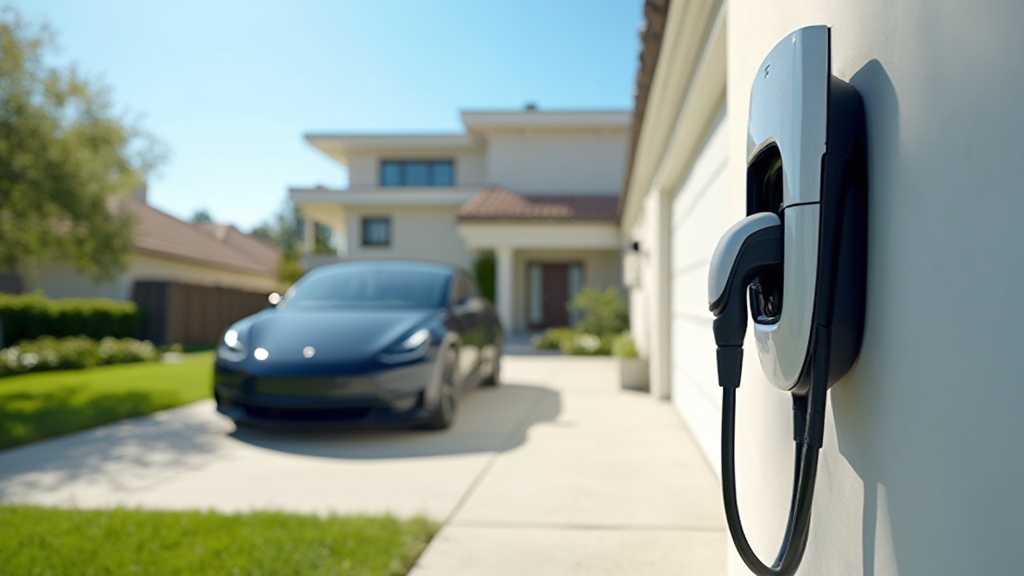Introduction
Imagine waking up each morning knowing your electric vehicle is fully charged and ready to go, all without the hassle of a gas station visit. For homeowners considering the installation of a Tesla charger, this dream can become a reality, but understanding the costs and options available is crucial.
From the different types of chargers to the installation requirements and potential savings through incentives, navigating the world of EV charging can feel overwhelming. This guide aims to break down everything homeowners need to know, ensuring that making the switch to a Tesla charger not only enhances convenience but also supports a sustainable lifestyle.
Whether it’s exploring the average costs, identifying additional expenses, or maximizing savings through rebates, this article will empower homeowners to make informed decisions about their electric vehicle charging solutions.
Understanding the Average Costs of Tesla Charger Installation
When evaluating the setup of a Tesla charging station, environmentally aware homeowners can anticipate the average cost to install to be between $800 and $2,000. Prices for residential Level 2 units vary from $400 to almost $2,000, affected by elements like the category of device chosen, complexity of setup, and the geographical area of your residence. It’s essential to take into account both the equipment expenses and setup charges, which may fluctuate depending on local labor rates and your home’s specific electrical needs.
Our expert team at Powercore Electric ensures a comprehensive setup process, starting with a thorough site assessment to determine the ideal location for your charger, followed by any necessary electrical upgrades, the actual setup, and rigorous testing to guarantee optimal performance. The Mobile Connector comes with a 12-month warranty, or 48 months if included with the vehicle purchase, adding to its reliability and value. Understanding the average cost to install Tesla charger, along with other expenses that can vary based on setup complexity and electrical needs, not only assists in budgeting but also enables homeowners to make informed choices about their electric vehicle power options.
After installation, users can enjoy the benefits of Tesla home power supply, including WI-Fi connectivity for remote management through the Tesla app. This enables you to manage power supply, view stats, set access controls, and receive remote diagnostics, enhancing convenience and efficiency for years to come. Don’t forget to explore local incentives and rebates available in your area, which can promote renewable energy adoption and potentially lower your overall costs.
Exploring Tesla Charger Types and Installation Requirements
Tesla offers a range of power solutions tailored to various needs, notably the Wall Connector and the Mobile Connector. The Wall Connector is designed for individuals desiring a permanent setup, providing faster power delivery that can greatly minimize downtime. In contrast, the Mobile Connector functions as a versatile power supply option, perfect for those who are frequently on the move.
As of late 2022, Tesla has started manufacturing new Supercharger equipment for , reflecting the evolving landscape of power solutions. When considering the average cost to install a Tesla charger, the requirements can vary widely. For instance, the average cost to install a Tesla charger, such as a Wall Connector, typically necessitates a dedicated circuit, and if your home’s electrical system isn’t equipped to handle the load, you might need to invest in some upgrades.
A case study on home Supercharger feasibility emphasizes that despite rumors of a secret home Supercharger, the high expenses related to supplying adequate electricity for 145 kW of power render it impractical compared to other solutions. Comprehending these differences is essential for homeowners as they explore the best power solution for their unique lifestyles. Moreover, integrating solar energy solutions into your home can significantly enhance sustainability.
Active solar heating systems, which utilize pumps and controls to circulate heat transfer fluids, can enhance your Tesla power setup by supplying renewable energy to meet your energy requirements. Passive solar heating systems, which rely on building design to optimize heat absorption, can also reduce your overall energy consumption. As Ellen Sirull points out, ‘One of the best long-term solutions to reduce your home Tesla charging expenses is to utilize solar energy for free home EV charging from the sun.’
Taking into account the financial advantages like savings and greenhouse gas reduction, along with recent information on solar energy options, keeping updated on the newest Tesla power supply variants and setup requirements will enable you to make decisions that improve both convenience and sustainability.
Identifying Additional Costs in Tesla Charger Installation
When it involves setting up a Tesla power source, it’s crucial to consider the average cost to install as well as more than merely the basic setup expenses. Eco-conscious homeowners should be prepared for additional expenses that may arise during the process. Labor expenses can fluctuate significantly depending on the intricacy of the task, with statistics indicating that the average cost to install a Tesla charger by employing a licensed electrician can average around $425 for a basic installation.
For example, Diana Anderson recently shared her experience, stating,
I’ve just been quoted $2,700 to install a wall unit. The guys seem legit and have great reviews. It’s a bit of a job as the cable needs a lot of routing.
Looking at 7 hours of labor and a fair bit of wire, etc. It’s a lot but does that sound about right at the high end? This emphasizes the significance of obtaining several estimates to comprehend the average cost to install a Tesla charger and the range of possible expenses.
Additionally, permits required by local authorities can add another layer of expense. If your current electrical system needs an upgrade—say, a new circuit or panel—this can significantly increase your overall investment. A recent case study on a complete electrical upgrade disclosed that the average cost to install Tesla charger was part of a total expense of $3,200 for a new 200A meter box and main panel.
It’s also crucial to ensure compliance with electrical codes; for example, using #8 AWG wire on a 60-amp circuit is a violation. Additionally, homeowners ought to evaluate their driving behaviors and the electrical capacity of their residences when choosing charging alternatives, as these elements can affect expenses. By grasping these components, you can budget more efficiently and ensure a smoother setup process.
Furthermore, numerous homeowners might be eligible for government incentives or rebates designed to encourage electric vehicle adoption, which can assist in reducing setup expenses. At Powercore Electric Inc., we provide a variety of services including solar panels, battery backups, and EV charging station setups, ensuring that you have access to comprehensive energy solutions tailored to your needs.
Maximizing Savings: Incentives and Rebates for Installation
For eco-conscious homeowners in Long Beach contemplating the setup of electric vehicle stations, including Tesla stations, there’s positive news—the array of incentives and rebates is quite favorable. Many states and local governments have rolled out programs designed to ease the financial burden of these installations. For example, Black Hills Energy in Colorado offers a generous $500 rebate for purchasing , a significant incentive for potential buyers.
Likewise, Kirkwood Electric offers a $300 rebate for installing a Level 2 EV power station, assisting homeowners keen to invest in EV infrastructure. Residents in South Carolina can benefit from Santee Cooper’s rebate program, which offers up to $250 for purchasing a Level 2 EV charging station. Additionally, starting January 1, 2024, buyers of new or pre-owned electric vehicles can transfer their clean vehicle tax credits directly to registered dealers, allowing them to reduce the purchase price immediately.
This change can significantly influence purchasing choices for homeowners, as they can effectively reduce their total expenses at the time of sale. Homeowners can also expect tax credits ranging from $300 to $800 to further ease their expenses. To demonstrate the advantages of these incentives, reflect on the experience of a Long Beach resident who set up a Tesla charging station, which helped lower the average cost to install Tesla charger by obtaining a $500 rebate.
With a variety of programs available, it’s essential for homeowners to explore local incentives to ensure they’re maximizing their savings on these eco-friendly installations. And while you’re at it, consider the benefits of solar panels to further enhance your energy efficiency, explore local solar panel cleaning services to maintain optimal performance, and look into battery storage options to harness solar energy effectively. Embracing these solutions not only supports your budget but also contributes to a sustainable future.
Long-Term Benefits and Savings of Home Tesla Charger Installation
Installing a Tesla charger at home can yield remarkable long-term savings for eco-conscious homeowners. By choosing home refueling, you can significantly lower your fuel costs compared to traditional gasoline vehicles. In fact, recharging at home often costs less than using public Superchargers, where rates can reach up to $0.43 per kWh.
The convenience of having a power source right at your fingertips means you can recharge overnight, avoiding the hassle of trips to public stations. This not only improves your overall electric vehicle experience but also enables you to enjoy seamless power supply without interruptions. Additionally, with Powercore Electric’s EV charging solutions, you can anticipate a dependable setup process, as they are partnered with Qmerit, the largest network of in North America, which has installed over 450,000 EV charging stations and is rated #1 in customer satisfaction.
The average cost to install a Tesla charger generally varies from $1,000 to $2,500, depending on the specifics of your residence and electrical system. Additionally, homeowners associations are mandated by Senate Bill 1016 to permit the setup of EV power sources within individual units, provided that the homeowner covers all associated costs and complies with safety standards. Eventually, the savings from reduced fuel expenses and increased convenience can effectively counterbalance the initial setup costs, including the average cost to install a Tesla charger, making the investment in a home Tesla unit a wise decision.
With various incentives and rebates available, such as federal tax credits and utility company programs, Powercore Electric can assist you in navigating these options, alleviating the financial burden of setup and paving the way for a greener lifestyle without breaking the bank. Contact Powercore Electric today for a quote on your Tesla charger installation and take the first step towards a sustainable future!
Conclusion
Installing a Tesla charger at home presents a fantastic opportunity for eco-conscious homeowners to enhance convenience while embracing sustainable living. Understanding the average costs, which range from $800 to $2,000, is crucial for effective budgeting. Factors such as the type of charger, installation complexity, and local labor rates can all influence these costs. Additionally, it’s essential to consider potential additional expenses, including:
- Labor
- Permits
- Necessary electrical upgrades
These can add to the overall investment.
Homeowners have a variety of charger options, like the Wall Connector for permanent installations or the Mobile Connector for on-the-go charging. Choosing the right type based on specific needs and ensuring compliance with local electrical codes will facilitate a smoother installation process. Moreover, exploring local incentives and rebates can significantly reduce the financial burden of installation, making it an even more appealing option. Programs like those offered by Black Hills Energy and Kirkwood Electric provide tangible savings that can help offset costs.
In the long run, the benefits of having a home Tesla charger extend beyond convenience. By charging at home, homeowners can enjoy lower fuel costs compared to traditional gasoline vehicles, not to mention the ease of recharging overnight. These considerations, combined with the potential for significant savings through available incentives, underscore the value of investing in a Tesla charger. Embracing this technology not only supports personal convenience but also contributes to a more sustainable future.


